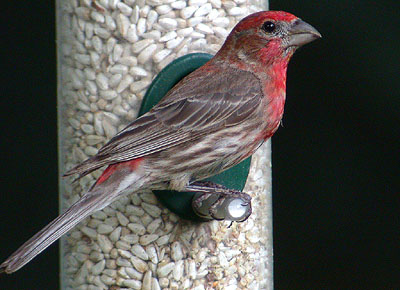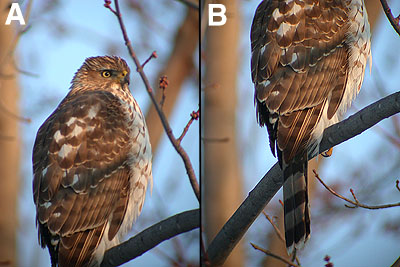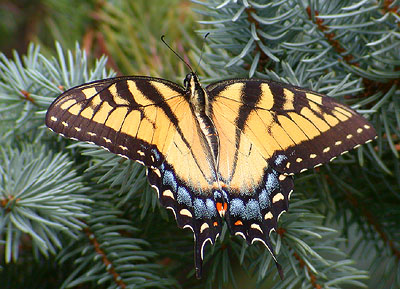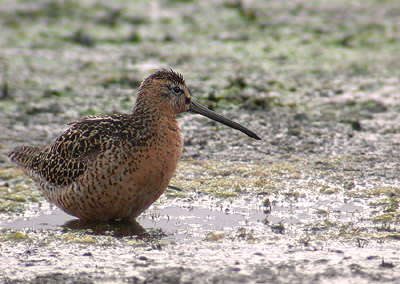
It seems so inherently unfair that people who choose to feed birds may be creating problems for finches. With a little periodic effort, you can safely provide food for them but
please keep your bird feeders clean! In the past few weeks I've noticed a substantial increase in the number of
House Finches coming to my backyard bird feeders. So here's a reminder on why we need to be diligent in keeping the feeders clean for our hungry feathered friends.
Brief History: Since January 1994, when House Finches with red, swollen eyes were first observed at feeders in the Washington, D.C. area, including parts of Maryland and Virginia, House Finch disease has spread rapidly through the eastern House Finch population.
Mycoplasmal conjunctivitis, as the disease is commonly called, is caused by a unique strain of Mycoplasma gallisepticum, a parasitic bacterium previously known to infect only poultry.
Bird Feeding Guidelines to prevent Disease: - Space your feeders widely to discourage crowding.
- Clean your feeders on a regular basis with a 10% bleach solution solution (1 part bleach and 9 parts water) and be sure to remove any build-ups of dirt around the food openings. Allow your feeders to dry completely before rehanging them.
- Rake the area underneath your feeder to remove droppings and old, moldy seed.
- If you see one or two diseased birds, take your feeder down immediately and clean it with a 10% bleach solution.
Link:
House Finch Disease SurveyLink:
FAQ about House Finch DiseaseLink:
All about the House Finch from Cornell LabsI've since discarded the tube feeder that you see in the above image and went with a larger mesh-style one as pictured below with the Rose-breasted Grosbeak. There is less crowding and the birds don't have to stick their heads into the dispenser holes, plus it's a lot easier to clean.
House Finch image © 2005 Michael Allen McDowell



























